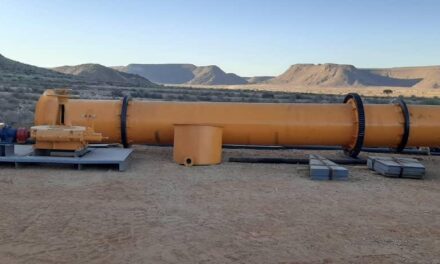
Lofdal EPL renewal pending
Despite reports in the media that Namibia Rare Earths has been granted a mining license to commence mining operations on the Lofdal deposit, The Economist has established that Namibia Rare Earths will have to renew its exclusive prospecting license after enquiring on the status of the application for a mining license according to Ministry of Mines and Energy spokesperson, Andreas Simon. The exploration license expired on 30 July 2014 and is due for renewal before the end of the year.
Commenting on the matter, Simon said, “Namibia Rare Earth has not applied for a mining license as alleged by the media. Up to now their flagship project [Lofdal] near Khorixas is covered by
EPL 3400. The company has applied for the renewal of Exploratory Prospecting License No. 3400 on 30 July 2014 and the licence is likely to be renewed before the coming festive season.”
A preliminary economic assessment on the Lofdal Rare Earth project recently concluded indicated positive results, paving the way for Namibia to become an exporter of rare earth metals in the not too distant future, indicating that the Lofdal project could potentially produce an average of 1,500 tons per annum of separated rare earth oxides. The preliminary assessment further highlighted the potential to expand the current mineral resource with the need for additional drilling to be carried out when the pre-feasibility study commences.
Donald Burton, President of Namibia Rare Earths said, “This Preliminary Economic Assessment provides shareholders and investors with the first indications of the economic potential of Lofdal. The preliminary economic assessment confirms the strengths of the project in terms of its favourable rare earth distribution and amenability to conventional mining and processing, and demonstrates its financial strengths in terms of the low capital costs and significant cash flows. The preliminary economic assessment provides a clear path forward for development of the Project. Management believes that there remains considerable upside to the Project as we move towards pre-feasibility and feasibility studies. Together with on-going metallurgical optimizations, we will target additional drilling to significantly expand mineral resources and to establish mineable reserves thereby extending the life of mine.” According to the assessment conducted, mining will be carried out by open pit methods with the ultimate pit reaching a vertical depth of 200 metres for a life of mine over 7 years. The project is estimated at US$155,735,000 and will include direct capital costs for mining, mill site processing facilities, cracking plant processing facilities, tailings storage facility and camp allowance; sustaining capital; closure costs; indirect costs and contingency. The initial capital requirements for the project are estimated at US$92,056,00. It is estimated that mining activities can effectively soak up 230 people in the Khorixas region.
Namibia Rare Earths is yet to initiate an environmental impact assessment.












































